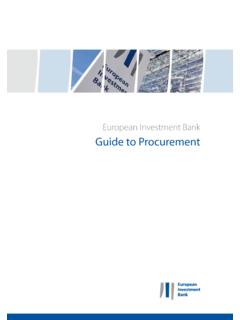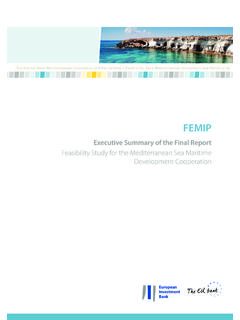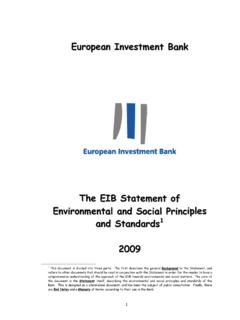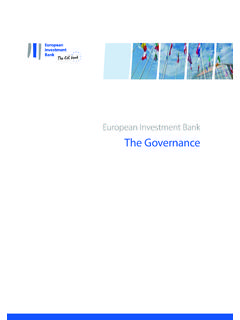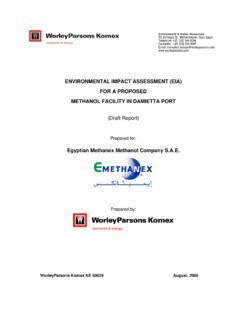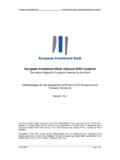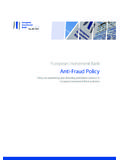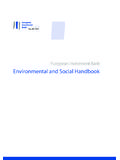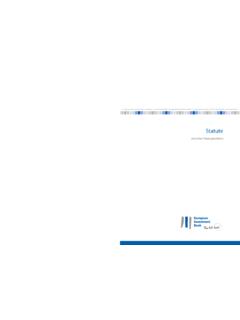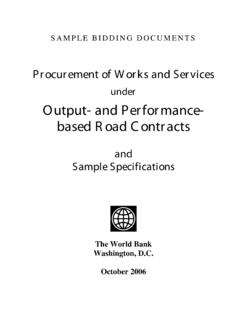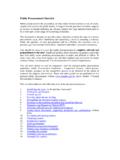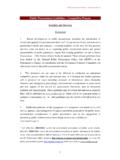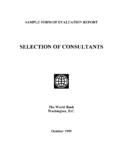Transcription of Procurement of PPP and the use of Competitive …
1 Procurement of PPP and the use of Competitive dialogue in europe A review of public sector practices across the EUEuropean PPP Expertise Centre European PPP Expertise Centre European PPP Expertise Centre European PPP Expertise Centre European PPP Expertise Centre Procurement of PPP and the use of Competitive dialogue in europe A review of public sector practices across the EU European PPP Expertise Centre ABSTRACT This report reviews PPP Procurement practices across europe with a particular focus on Competitive dialogue . The report seeks to identify the main benefits and problems with the use of the Competitive dialogue procedure based on the experience of the EU Member States to date.
2 2 The European PPP Expertise Centre (EPEC) is a joint initiative involving the European Investment Bank (EIB), the European Commission, Member States of the European Union, Candidate States and certain other States. For more information about EPEC and its membership, please visit This publication has been prepared to contribute to and stimulate discussions on public-private partnerships (PPPs) as well as to foster the dissemination of best practices in this area. The findings, analysis, interpretations and conclusions contained in this publication do not necessarily reflect the views or policies of the EIB, the European Commission or any other EPEC member.
3 No EPEC member, including the EIB and the European Commission, accepts any responsibility regarding the accuracy of the information contained in this publication or any liability for any consequences arising from the use of this publication. Reliance on the information provided in this publication is therefore at the sole risk of the user. EPEC authorises the users of this publication to access, download, display, reproduce and print its content subject to the following conditions: (i) when using the content of this document, users should attribute the source of the material and (ii) under no circumstances should there be commercial exploitation of this document or its content.
4 3 Table of contents 1. 4 2. Purpose of review and target 4 3. Scope of review and 4 4. Key .. Issues .. Issues worth further 5. Summary analysis of the res ponses to the General Procurement Choice of Procurement procedure and effect on Selection / changes of bidding Reliance on external advisors and use of standard Issues specific to Competitive Impact of the financial Perceived benefits brought by Competitive Perceived problems related to Competitive Issues linked to the financial 6. Conclusion and way 15 Annex 1. A comparison of EU Procurement 18 Annex 2: Transposition table for the Procurement 19 Annex 3: Summary of review of OJEU 30 Annex 4: Sharing of bid 34 41. Introduction One of the first choices to be made by a contracting authority following the decision on PPP Procurement is to select the Procurement procedure.
5 This is an important decision which should be taken after proper consideration of all available options and specifics of a particular PPP. Effective preparation and implementation of the Procurement procedure can significantly contribute to the success of a PPP project. EU legislation provides for four Procurement procedures: open, restricted (these two are also sometimes referred to as standard procedures ), negotiated and Competitive dialogue (the use of which is subject to conditions). Annex 1 to this report compares key features of the EU Procurement procedures. It should be noted that these procedures are not designed specifically for PPPs: they apply to all goods, works or services contracts. As far as Procurement of PPP is concerned, the Procurement options to choose from may be more limited under national laws and specific legal advice is required for each jurisdiction.
6 2. Purpose of review and target audience The purpose of this report is to review Procurement procedures used in PPP procurements across europe with a particular focus on Competitive dialogue . The report seeks to identify the main benefits and problems with the use of the Competitive dialogue procedure based on practical experience of the EU Member States to date. 3. Scope of review and process The methodology for this study was established by a working group of EPEC members and comprised: Desktop study of the extent to which Council Directive 2004/18/EC (the Procurement Directive) has been translated into national laws of the EU Member States1; Review of OJEU notices (both contract notices and contract award notices) with the aim of establishing the main Procurement procedures used for Procurement of PPP projects launched in 19 selected EU Member States since the beginning of 2007 until mid December 20092; Completion by EPEC members of a questionnaire on PPP Procurement practices.
7 EPEC members in 24 countries in europe (through their PPP units or other bodies in charge of overseeing the PPP market) were asked to fill in the questionnaire on PPP Procurement practices in their jurisdictions. EPEC received 17 responses to Part I of the questionnaire (General Procurement issues) and 12 responses to Part II ( Competitive dialogue ). This sample includes most of the countries in europe that have had significant experience in the use of Competitive dialogue3; Discussions within the working group. 1 Please see a summary of the results in Annex 2. 2 This data often proved difficult to interpret because of language and terminology issues. A high level summary is provided in Annex 3.
8 3 Countries which have not responded to Part II are those with no, or limited, experience with Competitive dialogue . 5 Key issues coming out of the survey were extensively discussed with some members within the working group. Such discussions yielded a number of additional valuable data. It should be noted that the survey has been limited to EPEC members and therefore mostly reflects the views of the public sector. 4. Key findings Issues identified Our desktop survey shows that all EU Member States have now transposed the Procurement Directive into their national Procurement laws and that almost all of them have implemented national laws dealing with procurements under the Competitive dialogue procedure.
9 Although PPP projects will often fit in the category of particularly complex contracts for which the Competitive dialogue procedure has been designed, the Procurement Directive does not provide for exclusive use of this method for PPP procurements. Many countries have therefore chosen to resort to other Procurement routes in their Procurement practices, even in some cases for complex PPPs. The review of OJEU notices and the results of our survey show that all four major Procurement procedures available under EU legislation, open, restricted, negotiated procedures and Competitive dialogue , are currently being used to procure PPPs, although to a different extent. Competitive dialogue appears to be the most commonly used, with over 70% of respondents reporting using it frequently or occasionally.
10 The following positive aspects of the Competitive dialogue procedure are reported by the countries that use it relatively frequently compared to alternative Procurement procedures: Improved communication between the contracting authority and the bidders during the dialogue , which allows to better define the contracting authority s needs and come up with better design and innovative solutions; Enhanced Competitive tension during the dialogue period which allows the contracting authority to achieve better value for money and agree on all vital commercial issues while there is still competition among participating bidders; Better price discipline which leaves less room for price creep at the post preferred bidder stage. In addition, there seems to be a general perception that Competitive dialogue does not expose the contracting authority to greater risk of legal challenges than alternative Procurement procedures.
